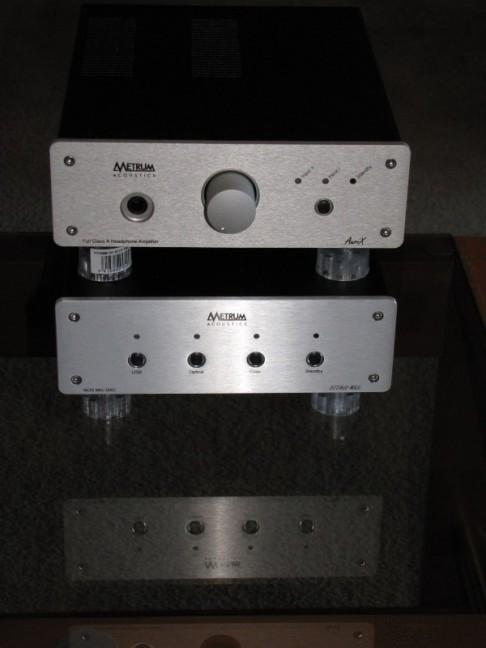Octave MK II NOS Mini DAC : Archived Product
Product Information

The Original Octave rocked the Audio World - a 'Game changing Dac' in fact. Refer Octave Product Page for more information. Rated comparable to esoteric '2 Box devices from Internationally acclaimed manufacturers' but the humble Octave costing a fraction of their prices.
Octave II does not change the Award winning design but now adds USB input, incorporates the same Toroid transformex used in Hex and reduces the box count to one sturdily built unit. Reviewed and rated comparable to some highly regarded Vinyl sources, Octave II will not cost you anywhere near as much. Pre loved units an even better bargain.
"The look of Octave Mk II, is based on big brother Hex and built around the new Mk II PCB. The housing is solid and functional without any frills. We kept the good qualities of the original design and added some new technology. Borrowed from Hex, this further improves both the measured and sonic performance.
Hex received awards for its extremely high performance, so we decided to use the same electronics for Octave Mk II. We replaced its receiver section with that of Hex, to accommodate 192kHz sample rates. Data buffering reduces jitter and isolates from irregular data reception. Besides standard Coax and Optical S/PDIF, the same USB module used in Hex is employed. To achieve optimum performance, critical design and parts matching were important. The result is superb sound from audio streaming sources".
Cees Ruijtenberg
M2TECH USB :
A modified OEM M2Tech board is used, based upon the popular hiFace asynchronous USB – S/PDIF converter. For Octave II a power break-out is employed, allowing the use of a separate power supply/dual headed cable etc. Refer 'Options' for USB3 information.
Custom Drivers are provided for computer installation and are available "Here"
USB module installation procedure "Here" - showing USB1 board installation in Hex.
No one disappointed yet - with either an Octave I or II - straight out of the box - at least in NZ.
SOLD OUT - Look out for Trades
General Information :
Metrum’s NOS Octave arrived 2011, a development of Quad Dac, which utilised 4 high speed industrial grade D/A chips. Not sourced from the audio sector, these chips do not revolve around over-sampling techniques and implementation does not involve digital filtering. The converters used, are normally found, where very fast data acquisition systems are required.
Further benefit was obtained. Output from these industrial converters, is far more robust than ordinary audio chipsets, removing the need for an output stage – thus reducing interruptions to the signal path. The signal in fact, goes direct to the connectors. With sufficient output, direct connection to a power amp is even possible, avoiding problems associated with output stages.
Octave II is a further development of the 8 industrial chip original, now incorporating USB input. It shares some Hex componentry and encased in one sturdy box.
Now Metrum’s ‘entry’ level Non Over-Sampling Dac, it like the Original, is capable of competing with Dacs costing many times more. The original was quite at home in a Reference system costing £100,000.
Original Octave performance (plonked on table) ..."which is true reference class, mixing with audiophile devices at 15 times the price"! "Game Changing Dac"
Metrum's new range of R2R NOS Dacs, starts with Octave II and then progresses through Musette, Hex, Menuet, Flagship Pavane and recently Adagio which adds Digital Volume control – all at hard to beat Price v Performance price points. Adagio in fact challenging Preamplifiers at price levels exceeding $20K.
Now an even better bargain than the Original 2 box Dac, Octave II incorporates a Metrum modified M2Tech USB module - rated by many as a fine converter. Some consider Octave II hard to tell apart from the Original, whilst others think it may be slightly better. Either way the Octave designs have been favourably compared to extremely expensive exotica – and this remains true today.
HiFiCritic continue to Award Octave “Audio Excellence” in the end of year 2015 Awards. This is because only a select few stand-alone Dacs at up to 10 times the price have sounded (only marginally) better. Both Hex and Octave however, come very very close to these - even outclassing others.
Critic's Sound Quality Ratings system covers c.30 years of Digital progress - providing useful historical comparisons ... "Historical Digital"
For reference to their Audio Recommendations and summary of their 7 year cumulative product Reviews ... "2015 Awards"
As with Hex and Pavane more recently, Octave II in review, proved so rewarding, that the Reviewer purchased one for his own system. Vinyl holds interest for many and some find digital sound, not so convincing.
Enjoythemusic found otherwise however, with Octave II … “I play this a lot on vinyl. I’ve not heard it anywhere near this good previously and this is in comparison with a Garrard 301 deck and London Reference cartridge. With the Metrum Octave MkII, I can achieve a sound equivalent to vinyl and throw fabulous hi-res digital into the mix too.”
Witchdoctor in Review had this to say .....
"This is a nice, tidy and simple looking unit but its looks are deceiving for the sound quality is complex and engaging and an absolute joy to behold. The big, rich and natural, non-clinical sound combined with excellent timing and rhythmic proficiency is likely to draw the usual comparisons with high quality analogue equipment and possibly even valve gear".
"Octave MkII sounded fabulous"
Hifitest from Germany report in straightforward language ... "Quite simply, the Octave II NOS DAC is an absolute must in its price range".
With some online help translation of this Review now available. "The thing plays like hell" !
Nerds.dk from Denmark are enthusiastic. Review translation now available ....
in Summary :
"Octave is not just good all around, it is really good. We do not offer prizes or price trophies, but if we did, it would be Metrum Octave MKII for ...
"Price and the year's Best Buy !"
With sound formats/platforms, ever on the increase .....
Four Sound Opinions :
“DSD can sound a little more airy and open than CD standard but nothing I’ve played so far, has shown me convincing dynamic expression, or suggested lifelike music reproduction – are genuine audiophiles going to be even slightly interested” ? Hi Fi Critic
“It proves to my mind that over-sampling, up-sampling or DSD conversion, are only necessary to overcome the shortcomings, of lesser Dac chips”. "See Ear"
"The Pavane is a fully PCM 24/384 compatible device, and it doesn’t need fashionable formats or upsampling to deliver the goods; it probably achieves its goals by avoiding them”. ''HiFi+''
Audio Codecs :
"… I’ll be buggered if I can tell the difference between FLAC or WAV files (and I don’t fancy my chances blind testing high-res sample rates against standard CD quality files, if I’m completely honest) …" "Consult the Doctor"
Digital Conversion software, as with audio codecs, fuels yet more controversy - at least in listening terms.
Comment :
Coaxial input has proved best here, with BNC (Bayonet Neill–Concelman) connection – if you are able to take advantage of this, with source output.
RCA (Radio Corporation of America) connection, was not designed for digital implementation. A ‘manufacturer’s committee’ decision, to adopt RCA as standard (after the introduction of CD), has been criticised by many, ever since. It was cheaper to implement of course. "BNC v RCA"
An RCA to BNC connector is supplied, should this be required. As with all Metrum products, performance can be affected/improved with cable matching. Benefit may be obtained using Silver cabling (also refer Aurix Information) and an RCA to BNC cable is worth considering, if only RCA output is available.
Octave II is revealing of source, cabling, recording quality and music software. This is why the Original was suggested as a suitable source, with to build a quality system around. Everything else of comparable quality may well cost a lot more.
Octave should sound ‘good’ out of the box ... and then gets better.
As with the entire Range, look for musicality, lifelike natural rendition, great dynamics, tone + timbre and attack with natural decay, to name but a few.
All qualities which distinguish High End audio from the norm - but you don’t need a ‘High End’ system to start hearing this.
Savings made with Octave can be directed elsewhere to more effect.
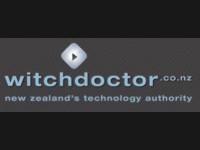

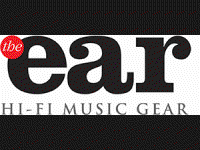

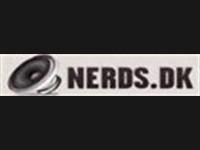
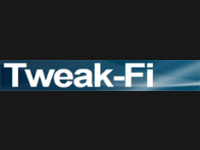
 USB2 module
USB2 module USB3 Module :
USB3 Module :

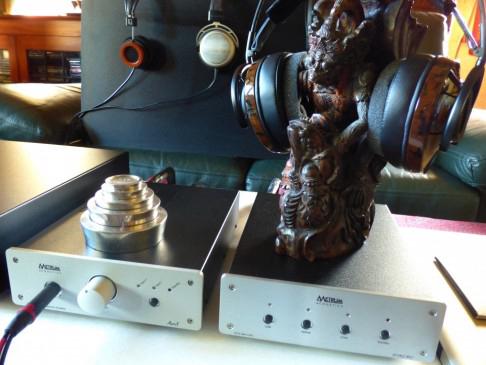 Whilst Pavane - Aurix - Nighthawk Headphones (as used by STS Digital) might be desirable ... a more budget friendly system might include Octave II and Aurix. Especially as the Nighthawks are currently on Special at only $399 ! Even out of the box it is easy to see why STS favour the Nighthawks. Bass is the 1st thing you will notice - putting other Phones to shame .... at several times their price. For less than the price of LCD-X phones - a 'complete' Headphone System is available.
Whilst Pavane - Aurix - Nighthawk Headphones (as used by STS Digital) might be desirable ... a more budget friendly system might include Octave II and Aurix. Especially as the Nighthawks are currently on Special at only $399 ! Even out of the box it is easy to see why STS favour the Nighthawks. Bass is the 1st thing you will notice - putting other Phones to shame .... at several times their price. For less than the price of LCD-X phones - a 'complete' Headphone System is available.
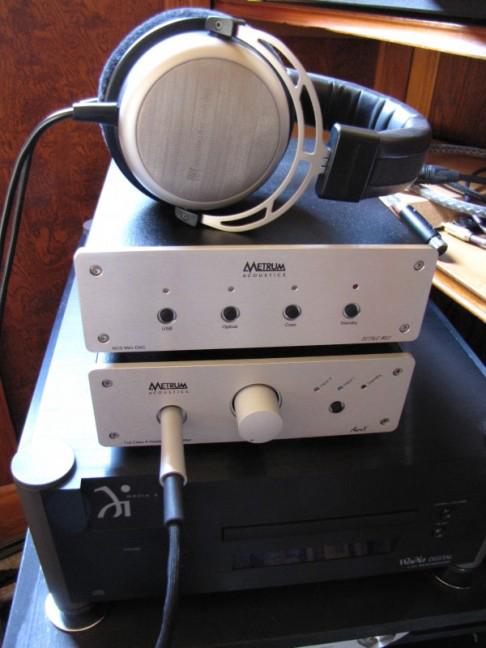 A good Digital Transport pays dividends ... and they do make a difference. Beyer T1's offer a neutral and transparent presentation ... perfect partners for Octave and Aurix.
A good Digital Transport pays dividends ... and they do make a difference. Beyer T1's offer a neutral and transparent presentation ... perfect partners for Octave and Aurix.
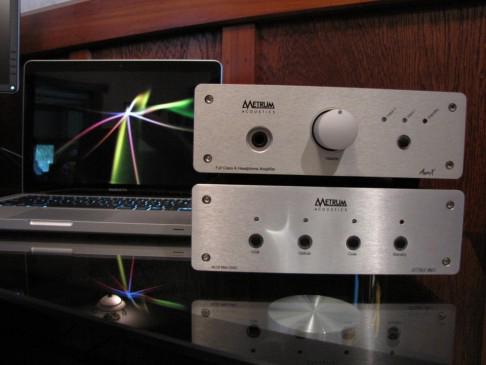 Desktop partners for computer audio.
Desktop partners for computer audio.
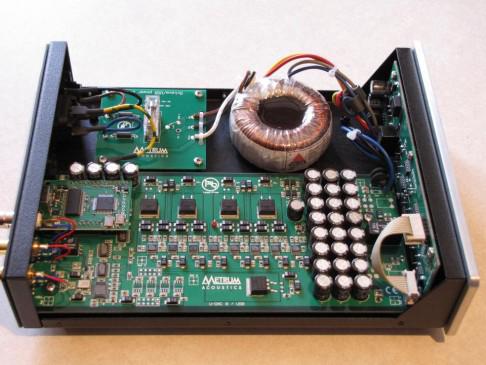 A Hex Toroidal transformer and neatly packaged PCB's.
A Hex Toroidal transformer and neatly packaged PCB's.
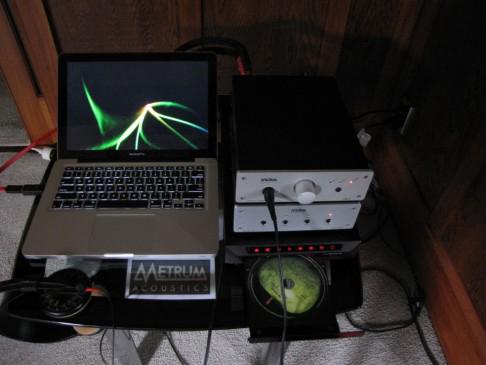 Nuforce CDP8 Transport offers preferred BNC output. The Apple label 'belongs' on the disc !
Nuforce CDP8 Transport offers preferred BNC output. The Apple label 'belongs' on the disc !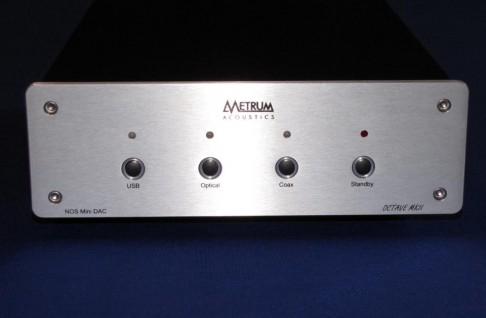
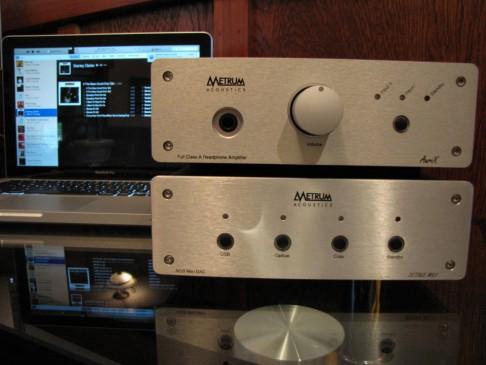
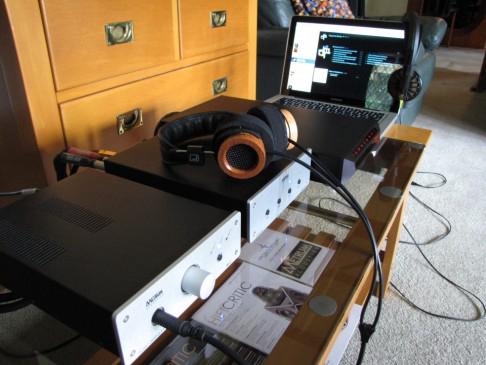 Grado range of Headphones also mate well with the Metrum range.
Grado range of Headphones also mate well with the Metrum range.
 For many HD800's offer great soundstaging and Aurix control's them perfectly. A modified Wadia Transport provides an excellent Digital signal - AES, BNC, Glass and Fibre Optical - but NOT RCA !
For many HD800's offer great soundstaging and Aurix control's them perfectly. A modified Wadia Transport provides an excellent Digital signal - AES, BNC, Glass and Fibre Optical - but NOT RCA !
 Nuforce Transport - Desktop CD.
Nuforce Transport - Desktop CD.
 Connectivity.
Connectivity.

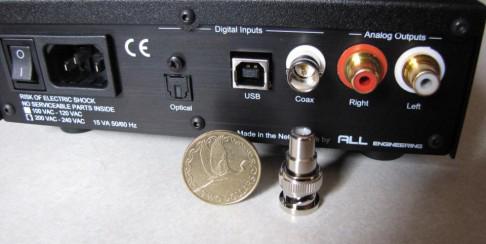 The Coaxial (BNC) connection with supplied BNC/RCA connector - in case BNC is not available. $2 coin to indicate size - Octave II is compact and suitable for desktop use when space is at a premium.
The Coaxial (BNC) connection with supplied BNC/RCA connector - in case BNC is not available. $2 coin to indicate size - Octave II is compact and suitable for desktop use when space is at a premium.
